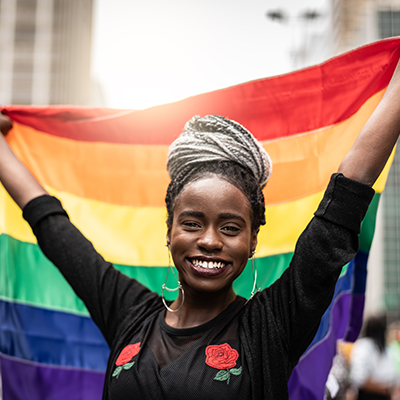Pride Month, celebrated each year in June, was initially inspired by the events that took place in June of 1969. On that day, something that was typical in that era happened when police raided the Stonewall Inn, a gay bar in New York City. But something not so typical followed: the patrons resisted. Weary of the harassment and persecution they had faced for years, protests led by members of the LGBTQI2+ community broke out and lasted for several days. [1]
In the U.S., this uprising marked the beginning of the modern gay and lesbian liberation movement.
But it also had a critical impact on the events that served as a catalyst for Pride celebrations in Canada. The most notable of these happening in 1981 when Toronto police officers stormed four gay bathhouses in the city and arrested just under 300 men as part of “Operation Soap.” In response to these raids, LGBTQI2+ folks took to the streets demanding for their civil rights and liberties. This was “Canada’s Stonewall” and in the years after, activists pushed even harder for the expansion of their legal rights.[2]
Here’s a look at some of the changes that have happened, in Canada, since 1981:
- 2003: First same-sex couple to marry in Ontario
- 2016: Parliament Hill raises Pride flag
- 2017: Bill C-16: Canadian Human Rights Act expanded to include Gender Identity & Expression
- 2019: WHO declares transgender is not a mental disorder[3]
During Pride, HRPA celebrates the advances that have been made to ensure the LGBTQ community can live safely and freely. We also pay homage to the Stonewall uprising and all those who fought for equal rights for LGBTQI2+ in Canada and across the world.
Supporting LGBTQI2 Inclusion at Work
While Canada has gone through significant legal shifts in support of LGBTQI2+ rights, prejudice and discrimination against LGBTQI2+ individuals, to this day, pervades our society and workplaces.
- Half of LGBTQI2+ respondents reported that they hide their sexuality at work.[4]
- 30% of LGBTQI2+ employees in Canada report experiencing discrimination in the workplace compared to only 3% of non- LGBTQI2+ employees according to the Canadian Centre for Diversity and Inclusion.[5]
- 49% of trans people are turned down or suspect they were turned down for a job because they identified as trans according to Egale Canada.[6]
HRPA is proud to recognize and support the diversity of our members, students and staff. We know that we all have a role to play in calling out acts of transphobia, homophobia and/or biphobia whenever or wherever we see it. As an HRPA member and HR professional, you can do your part by walking the talk. That means intentionally building workplaces that celebrate all people regardless of gender expression, gender identity and/or sexual orientation – and training your organization in LGBTQI2+ inclusion.
Here are some resources to help support these efforts: [all links open up into new tabs]
- Pride at Work Canada: Transitioning Employers: A survey of policies and practices for trans inclusive workplaces
- Pride at Work Canada: Hiring Across All Spectrums: A Report on Broadening Opportunities for LGBTQ2+ Jobseekers
- Pride at Work Canada: Beyond Diversity: An LGBT Best Practices Guide for Employers
- Pride at Work Canada: The Micropedia of Microaggressions
- Pride at Work Canada – Education
- Diversity and Inclusion Certificate Program – Happening August 9 and November 8
- Summer Conference – July 26 – 28
- HR Policy Templates
- OHRC: Questions and answers about gender identity and pronouns
- eLearning & On Demand – Some key ideas, case studies and exercises to explore:
– Creating a Diversity Mission Statement
– How to Encourage Diverse Perspectives
– Gender Reassignment Checklist for Initial Meeting
– Bullying and Harassment – What’s the Difference?
– Recruiting and Selecting Diverse Talent
– Promoting Diversity
Footnotes:
[1] History.com: Stonewall Riots
[2] The Canadian Encyclopedia: Toronto Bathhouse Raids
[3] CARP: Pride in Canada: A brief history
[4] CBC: Half of LGBTQ people surveyed hide sexuality at work in Sudbury, Windsor
[5] CCDI: Diverging Perspectives on LGBT Inclusion in the Workplace
[6] Egale Canada: Workplace Inclusion for Gender and Sexual Diversity
Blog Posts
April 04, 2024
